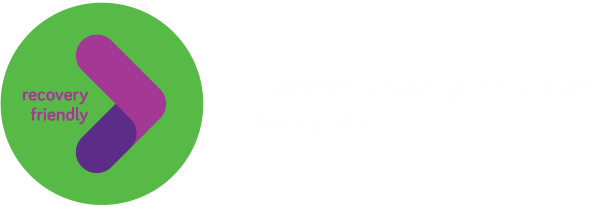“Don’t confuse poor decision-making with destiny. Own your mistakes. It’s ok; we all make them. Learn from them so they can empower you!”
– Steve Maraboli
Fixing the overcrowded prison population has helped provide recovery services to offenders who suffer from substance use disorder. In the past, substance use disorder (SUD) was considered a moral failing with punishment as the deterrent, and treatment was considered forced sobriety behind bars. As the image shows below (JLUSA, 2022), making drugs “public enemy number one” or creating a “War on Drugs” has increased the SUD prison population, with a massive increase overall. Currently, the United States has around a quarter of the world’s population imprisoned, while only housing 5% of the world’s people (ACLU, 2015). Of those imprisoned, 65% of the United States prison population has an active SUD (Gramlich, 2021).

The 65% that have an active SUD, which is now understood to be a brain disease, need access to recovery treatment. Evidence based research shows that people that have recovery treatment in prison can create a positive influence to society upon release. Positive repercussions include a reduction in crime, stronger family units, less overdose and death upon relsease, better job success and less people returning to prison (Drug Facts, 2020).
The problem is, the United States is correcting for an overpopulation crisis in the prison system. 9 state prisons systems in the United States are at overcapacity and the rest of the 41 states are at 75% or more (Wildra, 2020). Overcrowding leads to lack of good health care (including recovery treatment), limited education opportunities and reduced visitation (Wildra, 2020).
Thankfully, Obama began to address this problem by signing the Fair Sentencing Act, which involved drug related crimes, as well as created the Smart on Crime initiative that reduced maximum sentences (Eggleston, 2015). Trump continued this work by signing a law to reduce the federal prison population by shortening sentences and creating early release dates (Gramlich, 2021). With this combined effort, in 2019, incarceration rates fell to the lowest level since 1995, as the image shows below (Gramlich, 2021).

Those that struggle with SUD and have a criminal history are starting to be given other avenues to recovery other than imprisonment, partially thanks to the efforts of reducing the prison population. Drug courts assess risks and needs of each defendant (NIJ, 2020). A multidisciplinary team made up of judges, lawyers, correction officers, social workers and treatment service professionals monitor and supervise treatment and rehabilitation (NIJ, 2020). Graduates of Drug Courts are in recovery, and they are given the tools to be productive to society.
SAMSHA’s four pillars of recovery include health, home, purpose, and community (SAMHSA, 2022). Employment is considered part of purpose. People in recovery, having a criminal background or not, want an opportunity to work. Drug courts give the treatment and training to those that participate and graduate. The hope is for employers to hire them and learn the benefits of taking that chance.
To insure and motivate an employer’s choice to hire someone with a criminal record, two opportunities have been established. One, the Federal Bonding Program, created by the US Department of Labor. It protects an employer against any employee stealing, theft, forgery, larceny, and embezzlement for the first six months of employment (MO-DOC, 2022). Second, is the Work Opportunity Tax Credit. This tax credit reduces an employer’s federal income tax liability by $1,200 – $9,600 per employee with a history of felony, veteran service, and recipients of food stamps (SNAP), to name a few (Mo-DOC, 2022).
Here is a link to these two incentives: https://doc.mo.gov/programs/missouri-reentry-process/federal-bonding-work-opportunity-tax-credit
People in Recovery are ready to work, they have made mistakes, but those mistakes are not their destiny. They want to move forward.
References:
- ACLU. (2015). Overcrowding and Overuse of Imprisonment in the United States. American Civil Liberties Union. Retrieved from ACLU.pdf (ohchr.org)
- Eggleston, N. (2015, July 13). President Obama Annuonces 46 Commutations in Video Address: “America is a Nation of Second Chances.” The White House Blog. Retrieved from https://obamawhitehouse.archives.gov/blog/2015/07/13/president-obama-announces-46-commutations-video-address-america-nation-second-chance
- Gramlish, J. (2021, August 16). America’s incarceration rate falls to lowest level since 1995. Pew Research Center. Retrieved from America’s incarceration rate falls to lowest level since 1995 | Pew Research Center
- JLUSA. (2022). Incarcerated Americans (1920-2013). JustLeadershipUSA. Retrieved from https://jlusa.org/
- MO-DOC. (2022). Federal Bonding and the Work Opportunity Tax Credit. Missouri Department of Corrections. Retrieved from Federal Bonding and the Work Opportunity Tax Credit | Missouri Department of Corrections (mo.gov)
- NIDA. (2020). Criminal Justice DrugFacts. National Institute on Drug Abuse. Retrieved from Criminal Justice DrugFacts | National Institute on Drug Abuse (NIDA) (nih.gov)
- NIJ. (2020, July 7). Overview of Drug Courts. National Institute of Justice. Retrieved from https://nij.ojp.gov/topics/articles/overview-drug-courts
- SAMHSA. (2022, April 4). Recovery and Recovery Support. Substance Abuse and Mental Health Service Administration. Retrieved from Recovery and Recovery Support | SAMHSA
- Widra, E. (2020, December 21). Since you asked: Just how overcrowded were prisons before the pandemic, and at this time of social distancing, how overcrowded are they now? Prison Policy Initiative. Retrieved from Since you asked: Just how overcrowded were prisons before the pandemic, and at this time of social distancing, how overcrowded are they now? | Prison Policy Initiative

